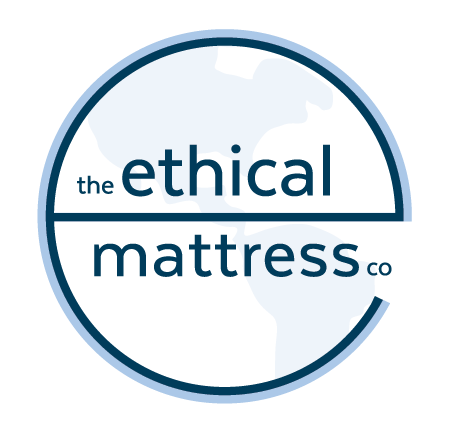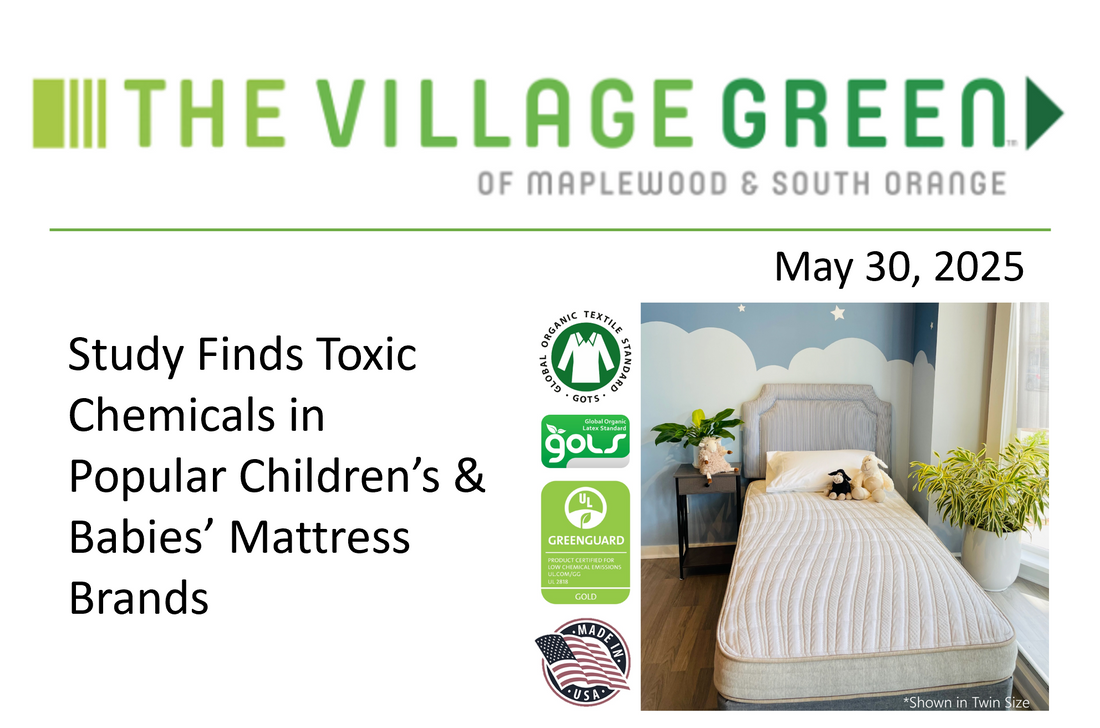A recent study published in the journal Environmental Science & Technology found that many popular babies’ and children’s mattresses emit toxic chemicals and flame retardants associated with developmental and hormonal disorders. The study, conducted by the University of Toronto, measured chemicals in the air of children’s bedrooms and “found worrisome levels of more than two dozen phthalates, flame retardants and UV filters,” said senior study author Miriam Diamond, a professor in the University’s Earth Sciences Department.
The greatest concentration of chemicals were found near the children’s beds. To understand why, Diamond’s team tested over a dozen new children’s mattresses and determined they were a key source of the exposure. Using a simulation of a sleeping child, they found that the warmth and weight of the child could actually increase the off-gassing of the toxicants. The study did not publish the mattress brand names, but according to the researchers they were well-known, lower-cost mattresses found at leading retail stores.
“They found that even something as simple as a child’s body heat and weight on a mattress can increase the release of toxic chemicals into the air they breathe while sleeping – a factor that current safety standards don’t consider,” said Jane Houlihan, research director for Healthy Babies, Bright Futures, an alliance of nonprofits, scientists and donors dedicated to reducing babies’ exposures to neurotoxic chemicals.
Bryan Umiker, a long-time Maplewood resident and owner of the Ethical Mattress Company in Millburn, said the study results were not a surprise for him. “I’ve spent over twenty years in the mattress business, and around five or six years ago I began to be very concerned by how most well-known brands made their products.” A former buyer and VP for Bloomingdale’s and Casper, Umiker decided to make a change in early 2022. “That’s when I opened my store, and it’s why I only sell toxin-free mattresses made from natural and organic materials. I wanted to offer my community a non-toxic and trustworthy alternative to the famous name-brand mattresses made from petrochemical foams and toxic flame retardants.”
The study found “high levels of phthalates that are restricted in toys but not in mattresses,” Diamond said. Phthalates are known to interfere with the endocrine system, the body’s mechanism for hormone production, and have been linked with early puberty, reproductive issues and genital defects, according to the National Institute of Health. Research has also connected phthalates with reproductive problems, such as genital malformations and undescended testes in baby boys and lower sperm counts and testosterone levels in adult males. Studies have also linked phthalates to childhood obesity, asthma, cardiovascular issues, premature deaths and cancer.
One mattress was found to off-gas 1,700 parts per million of an organophosphate ester called TDCPP, a flame retardant and known carcinogen. TDCPP is a type of polybrominated diphenyl ethers, or PBDEs, and according to a January 2020 study PBDEs are the “greatest contributor to intellectual disability” in children, resulting in a total loss of “162 million IQ points and over 738,000 cases of intellectual disability” between 2001 and 2016.
In some states, such as California with its passage of Prop 65, regulators have put additional limitations in place on products marketed for children, but there are currently no national laws covering classes of flame retardants. This despite a 2017 report by the US Consumer Products Safety Commission on the dangers of organophosphate esters.
“It’s concerning that these chemicals are still being found in children’s mattresses” said study co-author Arlene Blum, executive director of the Green Science Policy Institute, a group of scientists and policy experts who work and report on chemicals of concern.
According to Umiker, the toxic chemicals found in popular brands aren’t necessary. “Instead of toxic flame retardants, the mattresses we sell meet all the federal flammability standards simply by using a quilt layer of 100% organic wool. Wool is inherently flame resistant, but it’s a bit more expensive, and the big brands would rather save money than switch to all-natural materials.”
“The good news,” Umiker added, “is you can buy an affordable toxin-free mattress right here, and put your child to sleep at night knowing they’re getting the full benefit of a natural and healthy night’s sleep.”

